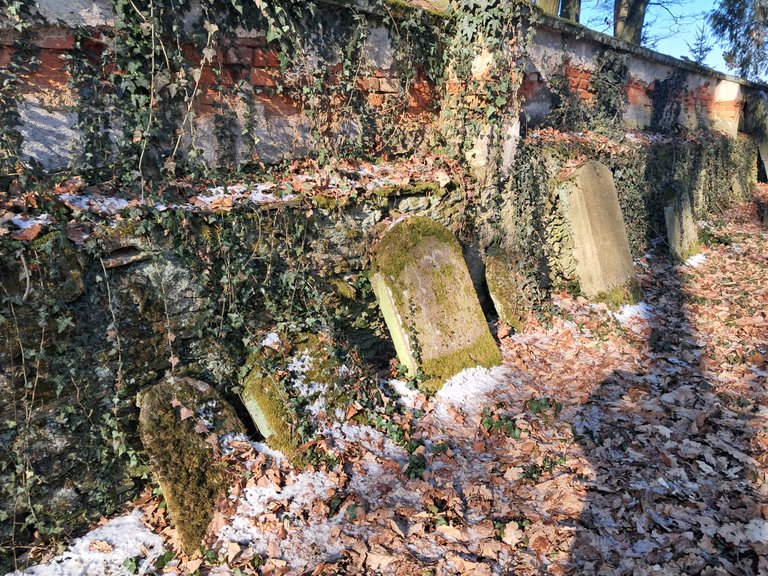
I don't primarily travel for sightseeing. But whenever I go somewhere outside my home for whatever reason, I look at a map to see what's interesting in the area. And when I have time, I go to the interesting places I find on the map.
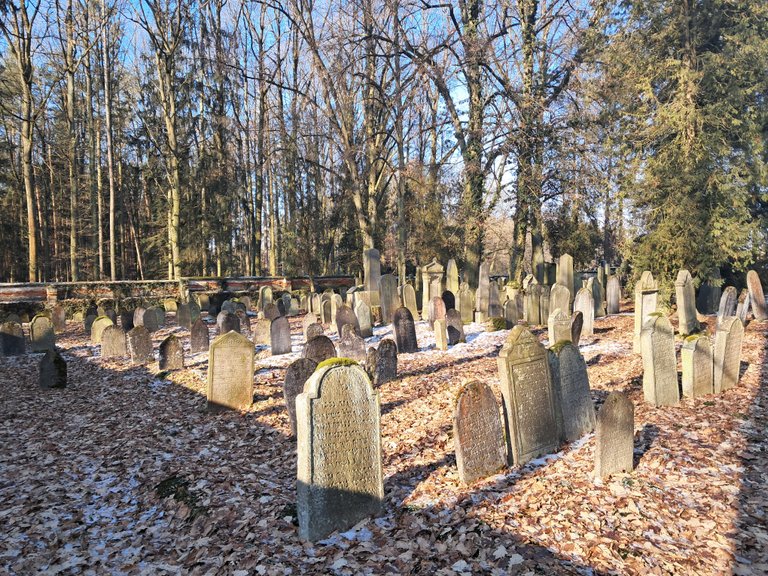
I look up castles and chateaus, urban conservation areas and last but not least Jewish cemeteries.
In my country, the Czech Republic, in the middle of Europe, the Jews were almost completely murdered by the Nazis during World War II.
Jewish cemeteries are therefore abandoned and mostly dilapidated places. Relatives of people buried there were murdered or fled abroad. Only occasionally, exceptionally, a stone lies on a grave. I don't know why, but these places attract me.
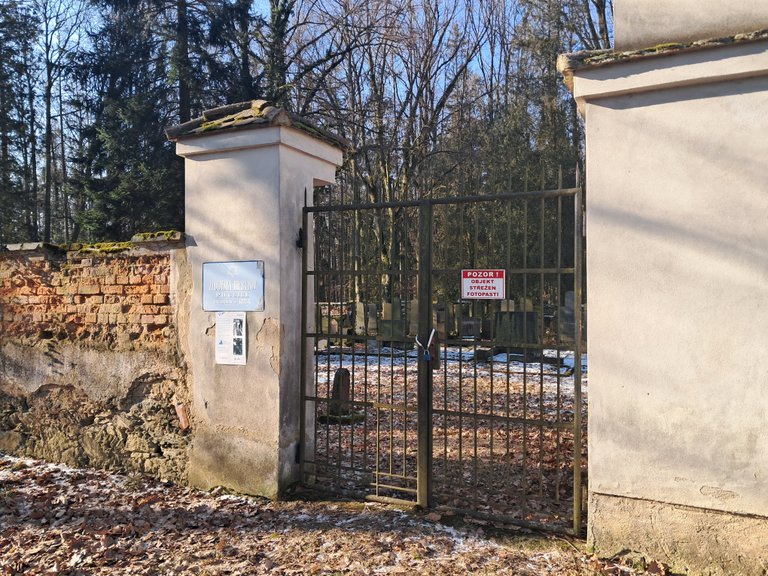
There are only a few Jewish communities in Bohemia that do not have the capacity to take care of abandoned cemeteries. The cemeteries are locked and are usually taken care of by a local person or institution.
Historically, cemeteries were built in abandoned, not very accessible places. Therefore, they are rarely damaged by vandals. Their main enemies are nature and time.
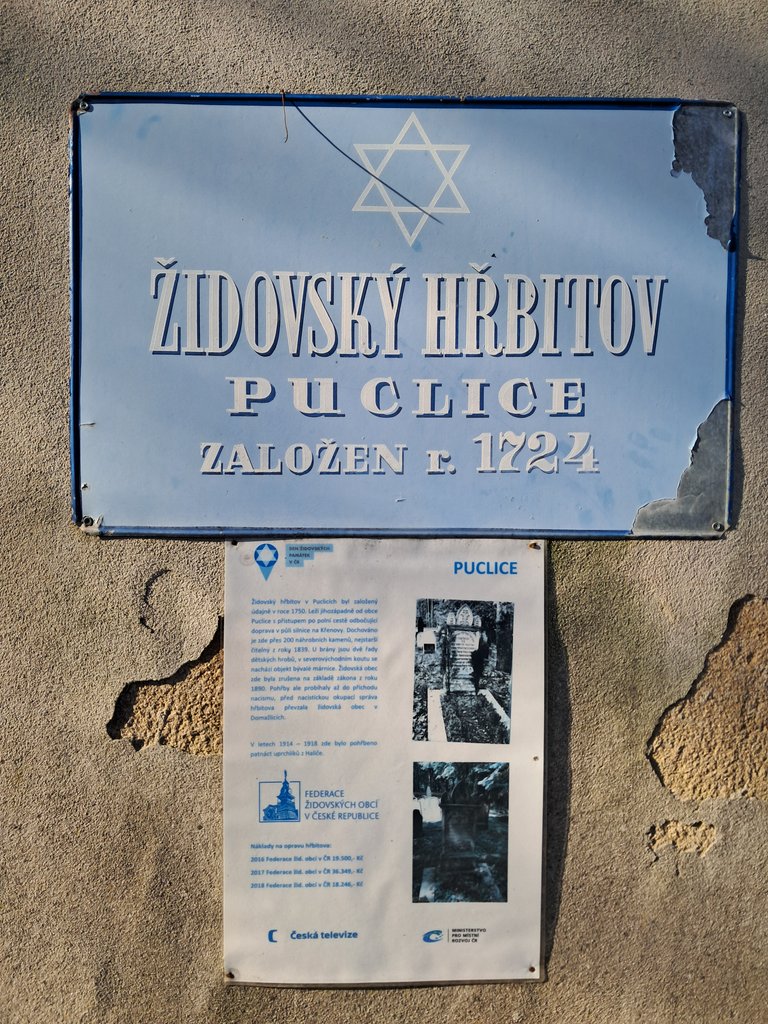
This time I visited what is said to be one of the best preserved Jewish cemeteries in Bohemia, in Puclice, in the West Bohemian Region, in the now closed Domažlice district. Judge for yourself how well preserved it is.

It was the end of February when I visited the place. It was freezing and the ground was covered with a thin layer of snow and sometimes ice. But the cold sun was shining. Those who know how can take interesting photographs in such conditions. I don't think of myself as a good photographer.
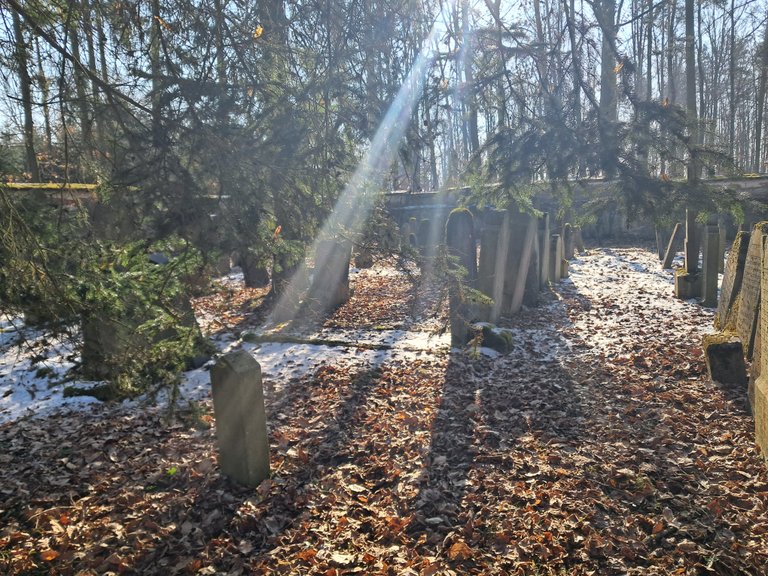
The cemetery is located in the forest. Trees, graves, snow and sunshine. It would take a lot of time to play with the individual images. But time was exactly what I was missing.
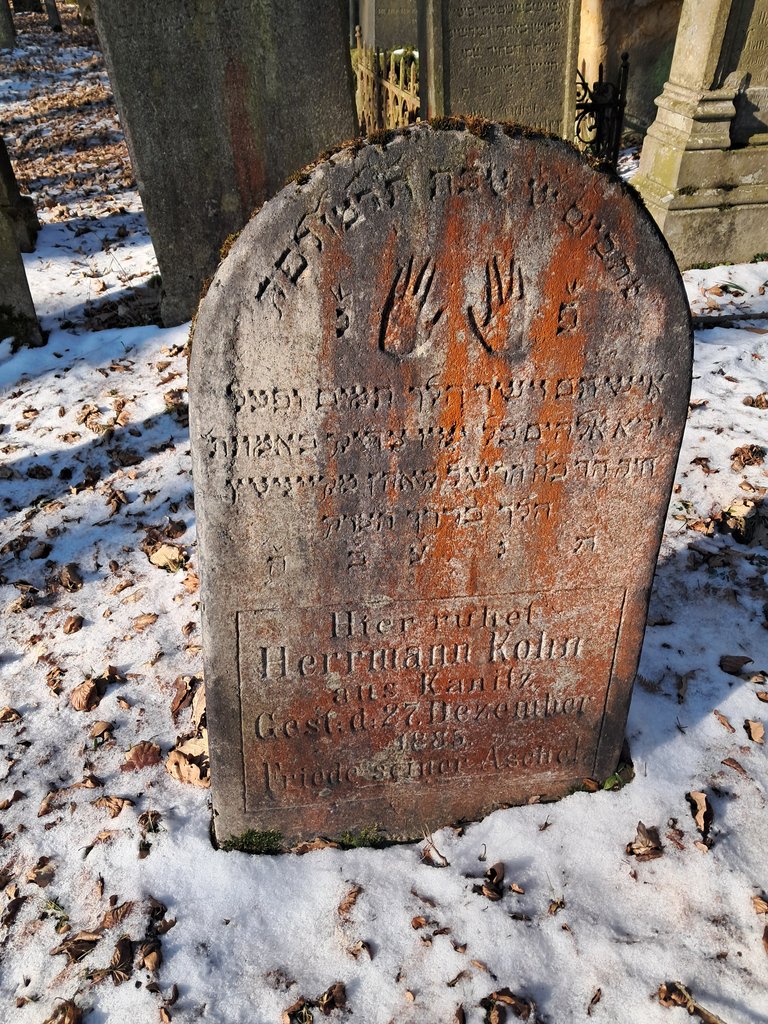
I assume the stone for this tombstone contains iron ore. But I'm not a geologist or a chemist.
I always try to find among the graves the tombstone of any Cohen, a priest of the original Jerusalem temple. The typical feature of such a tombstone is blessing hands.

Of course, I also search for the graves of Levites, temple helpers, singers, teachers. Their emblem is a ritual teapot.
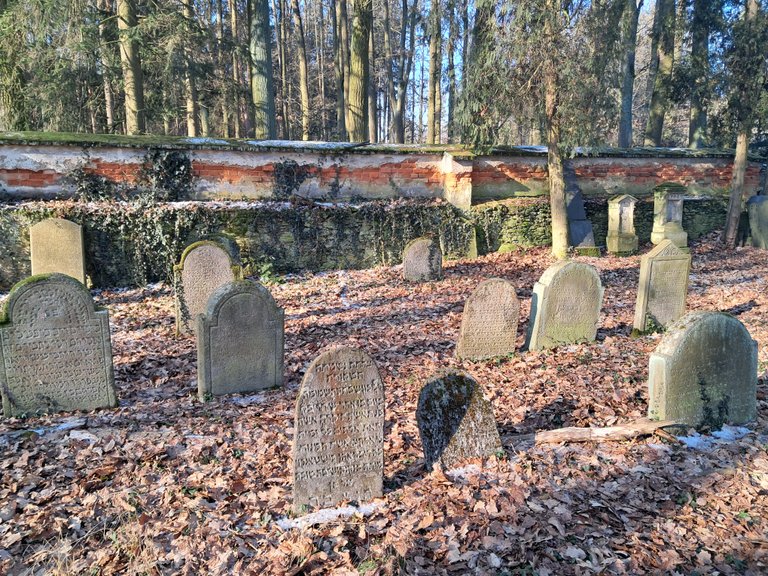
But it's true that I usually just wander around the cemetery and see what I see that is unexpected and interesting. I let myself be absorbed by the atmosphere of the place.
All I see on the oldest graves is Hebrew writing. I can barely decipher a few letters.

Mostly I think about the meaning and transience of human life. I'm overcome with melancholy.
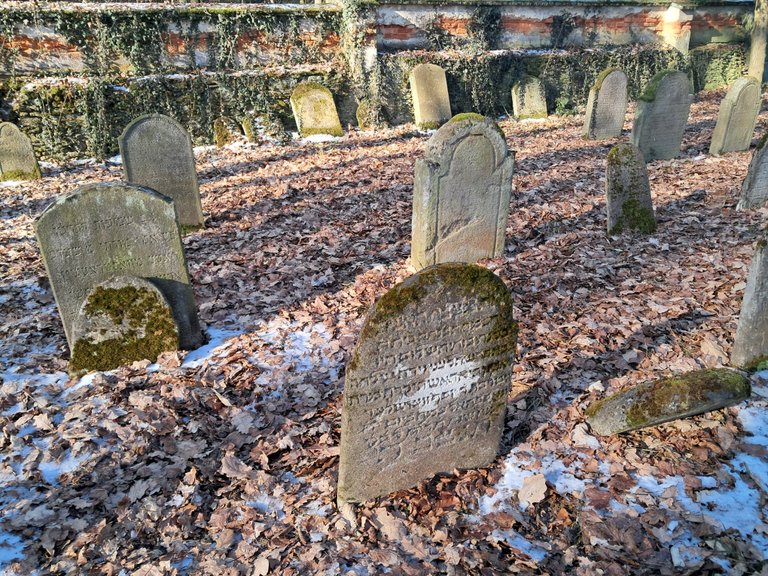
On each grave, the life story of the deceased is recalled in at least a few words, his good qualities and deeds are highlighted. People take turns on Earth. But the good deeds are here to stay. I'm getting into an uplifting mood. Human life has meaning!
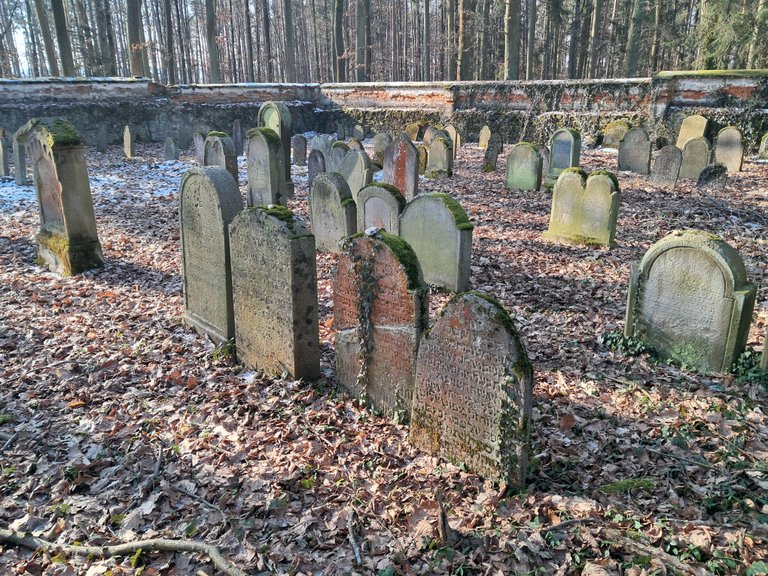
The cemetery was founded in 1724. The oldest tombstones read only Hebrew. Since the mid-19th century, German has appeared alongside Hebrew.
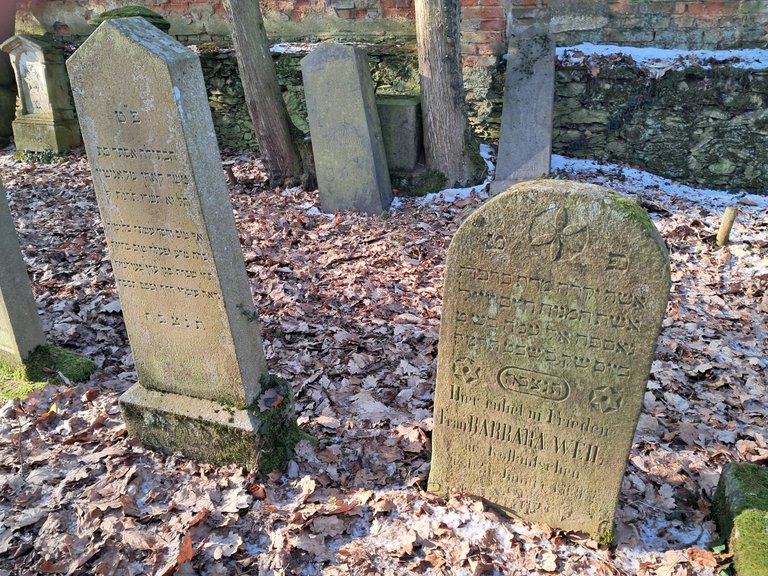
People imitate each other even in death. From this tombstone onwards, all the others are in Hebrew and German.
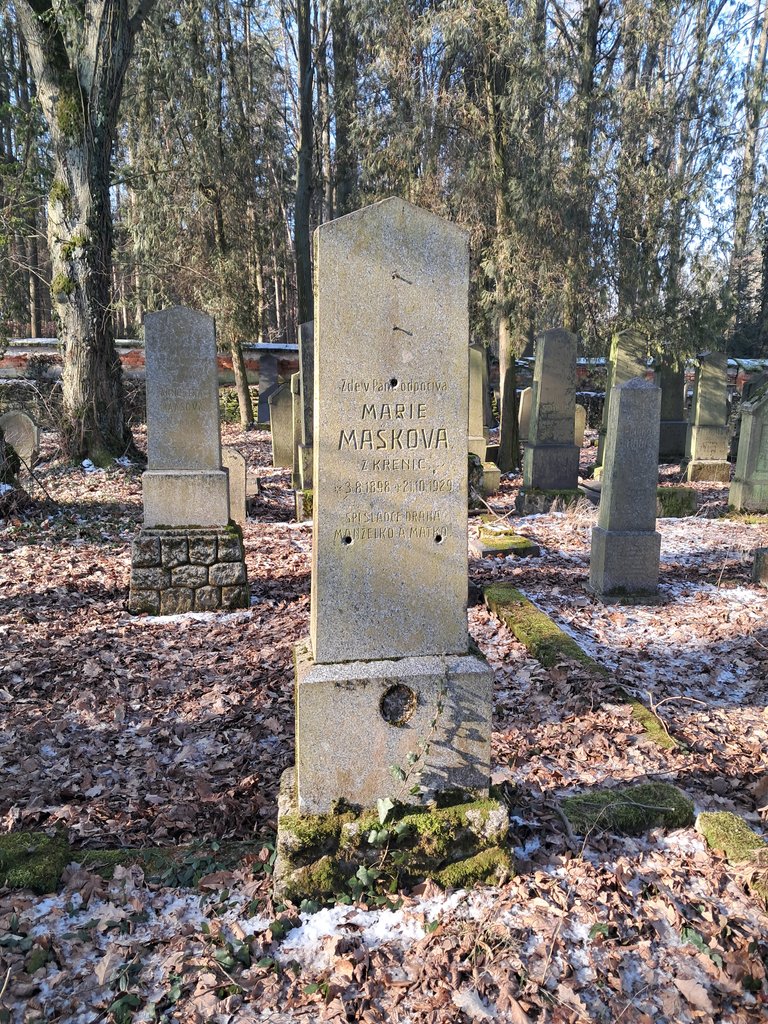
The period of the Czechoslovak state after 1918 comes. Czech gradually displaces German. Jews are increasingly assimilating. The Hebrew language is disappearing.
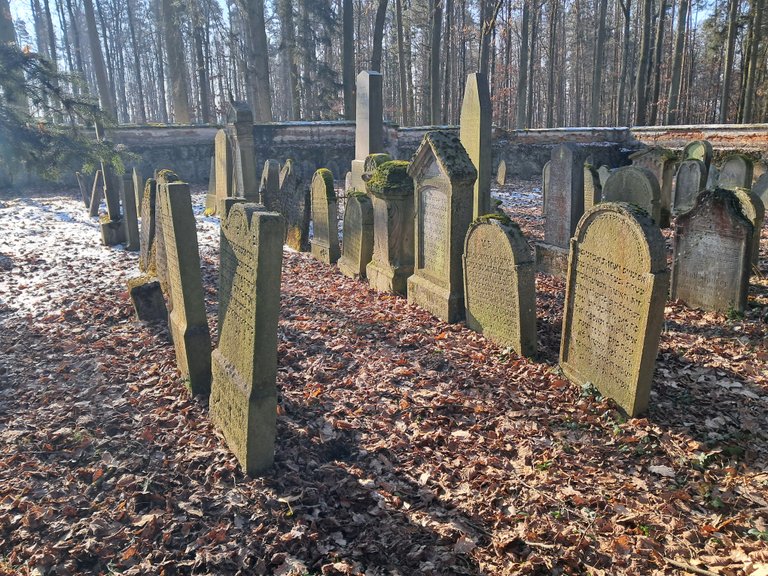
The forest around the cemetery is getting older. The forest is mostly coniferous, with spruce being the most abundant. In the context of global warming, the forest is dying. It is being destroyed by drought and pests, especially bark beetles. What will the cemetery look like in a few decades on a bare hill?
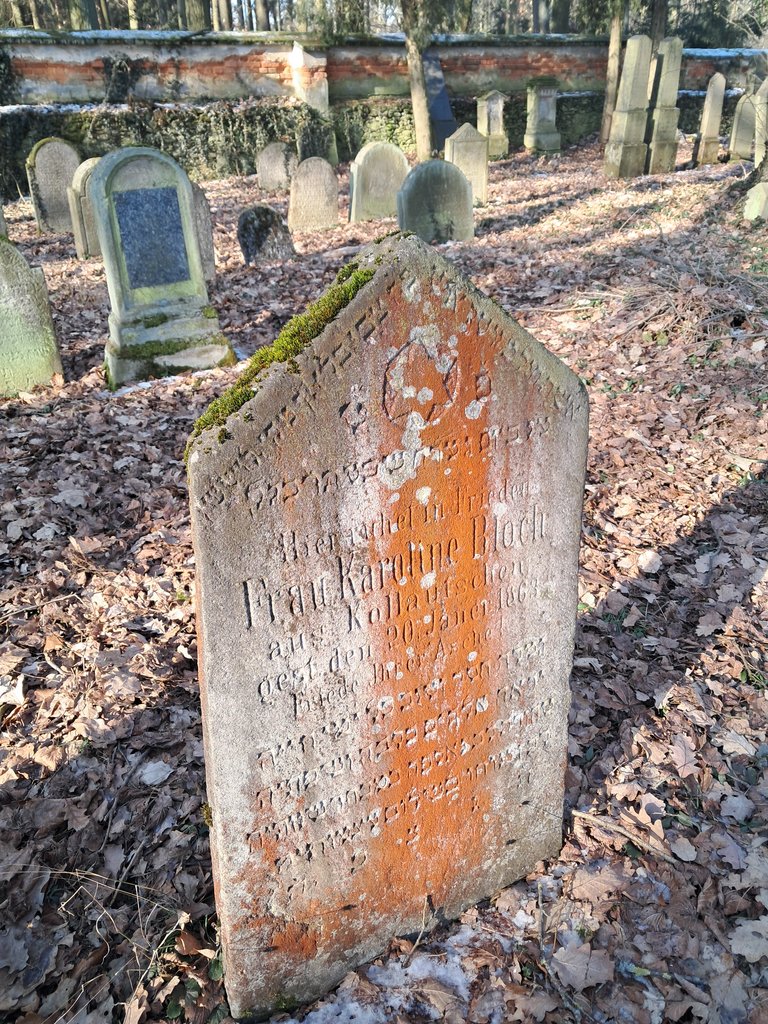
I always look to see which grave is the newest in the cemetery. This one's from 1939. This isn't. The one from 1939 wasn't interesting. This one looks like it has a bloodstain on it.
Those who died later, who were murdered by the Nazis, usually don't have graves anymore. Their ashes were scattered in rivers or used as fertilizer in fields. Sometimes it's lucky to die early.
Okay, this is not a typical travel article. I'll try to write about something more cheerful next time.
Translated with DeepL.com (free version)

Židovský hřbitov v Puclicích
Nejezdím primárně za památkami. Ale kdykoli se z jakéhokoli důvodu vydám někam mimo svůj domov, podívám se do mapy, abych zjistil, co je v dané oblasti zajímavého. A když mám čas, vydám se na zajímavá místa, která na mapě najdu.
Vyhledávám hrady a zámky, městské památkové rezervace a v neposlední řadě židovské hřbitovy.
V mé zemi, České republice, uprostřed Evropy, byli Židé za druhé světové války nacisty téměř kompletně vyvražděni.
Židovské hřbitovy jsou proto opuštěná a většinou zchátralá místa. Příbuzní lidí, kteří tam byli pohřbeni, byli buď zavražděni, nebo uprchli do zahraničí. Jen výjimečně leží na hrobě kamínek jako výraz úcty k zemřelému. Nevím proč, ale tato místa mě přitahují.
V Čechách je jen několik židovských obcí, které nemají kapacity na péči o opuštěné hřbitovy. Hřbitovy jsou uzamčené a většinou se o ně stará místní osoba nebo instituce.
Historicky byly hřbitovy budovány na opuštěných, nepříliš přístupných místech. Proto jsou jen zřídka poškozovány vandaly. Jejich hlavními nepřáteli jsou příroda a čas.
Tentokrát jsem navštívil údajně jeden z nejzachovalejších židovských hřbitovů v Čechách, a to v Puclicích v Západočeském kraji, v dnes již zrušeném domažlickém okrese. Posuďte sami, jak moc je zachovalý.
Bylo to koncem února, když jsem místo navštívil. Mrzlo a zem pokrývala tenká vrstva sněhu a místy i ledu. Svítilo studené slunce. Kdo to umí, může v takových podmínkách pořídit zajímavé fotografie. Já se ale nepovažuji za dobrého fotografa.
Hřbitov se nachází v lese. Stromy, hroby, sníh a slunce. Hrát si s jednotlivými snímky by zabralo spoustu času. Ale čas byl přesně to, co mi chybělo.
Předpokládám, že kámen pro tento náhrobek obsahuje železnou rudu. Ale nejsem geolog ani chemik.
Vždy se snažím najít mezi hroby náhrobek nějakého Cohena, kněze původního jeruzalémského chrámu. Typickým znakem takového náhrobku jsou žehnající ruce.
Samozřejmě hledám také hroby levitů, chrámových pomocníků, zpěváků a učitelů. Jejich znakem je rituální konvička.
Ale je pravda, že se většinou jen tak toulám po hřbitově a sleduji, co vidím nečekaného a zajímavého. Nechávám se pohltit atmosférou místa.
Na nejstarších hrobech vidím jen hebrejské písmo. Sotva rozluštím pár písmen. Většinou přemýšlím o smyslu a pomíjivosti lidského života. Zmocňuje se mě tu melancholie.
Na každém hrobě je alespoň několika slovy připomenut životní příběh zesnulého, vyzdviženy jeho dobré vlastnosti a skutky. Lidé se na zemi střídají. Ale dobré skutky tu zůstávají. Dostávám se do povznášející nálady. Lidský život má smysl!
Hřbitov byl založen v roce 1724. Nejstarší náhrobky jsou pouze v hebrejštině. Od poloviny 19. století se vedle hebrejštiny objevuje i němčina.
Lidé se navzájem napodobují i ve smrti. Od tohoto náhrobku jsou všechny ostatní v hebrejštině a němčině. Nastává období československého státu po roce 1918. Čeština postupně vytlačuje němčinu. Židé se stále více asimilují. Hebrejština mizí.
Les kolem hřbitova stárne. Les je převážně jehličnatý, nejhojněji je zastoupen smrk. V souvislosti s globálním oteplováním les odumírá. Ničí ho sucho a škůdci, zejména kůrovec. Jak bude hřbitov na holém kopci vypadat za několik desetiletí?
Vždycky se dívám, který hrob je na hřbitově nejnovější. Tady je z roku 1939. Tenhle to není. Ten z roku 1939 nebyl zajímavý. Tenhle vypadá, jako by na něm byla krvavá skvrna.
Ti, kteří zemřeli později, kteří byli zavražděni nacisty, už většinou nemají hroby. Jejich popel byl rozptýlen v řekách nebo použit jako hnojivo na polích. Někdy je štěstí zemřít dřív.

@tipu curate
Upvoted 👌 (Mana: 40/60) Liquid rewards.
!HBITSThank you @tipu, thank you @mad-runner
You can check out this post and your own profile on the map. Be part of the Worldmappin Community and join our Discord Channel to get in touch with other travelers, ask questions or just be updated on our latest features.
Ta "cihlová barva" na náhrobcích není od železa. Pokud jsou někde poblíž osiky, mohlo by to být od nich. U nás jsou takhle zbarvené kmeny osik.
Jednoduše řečeno, nevím.
Tahle nevědomost není naštěstí fatální.